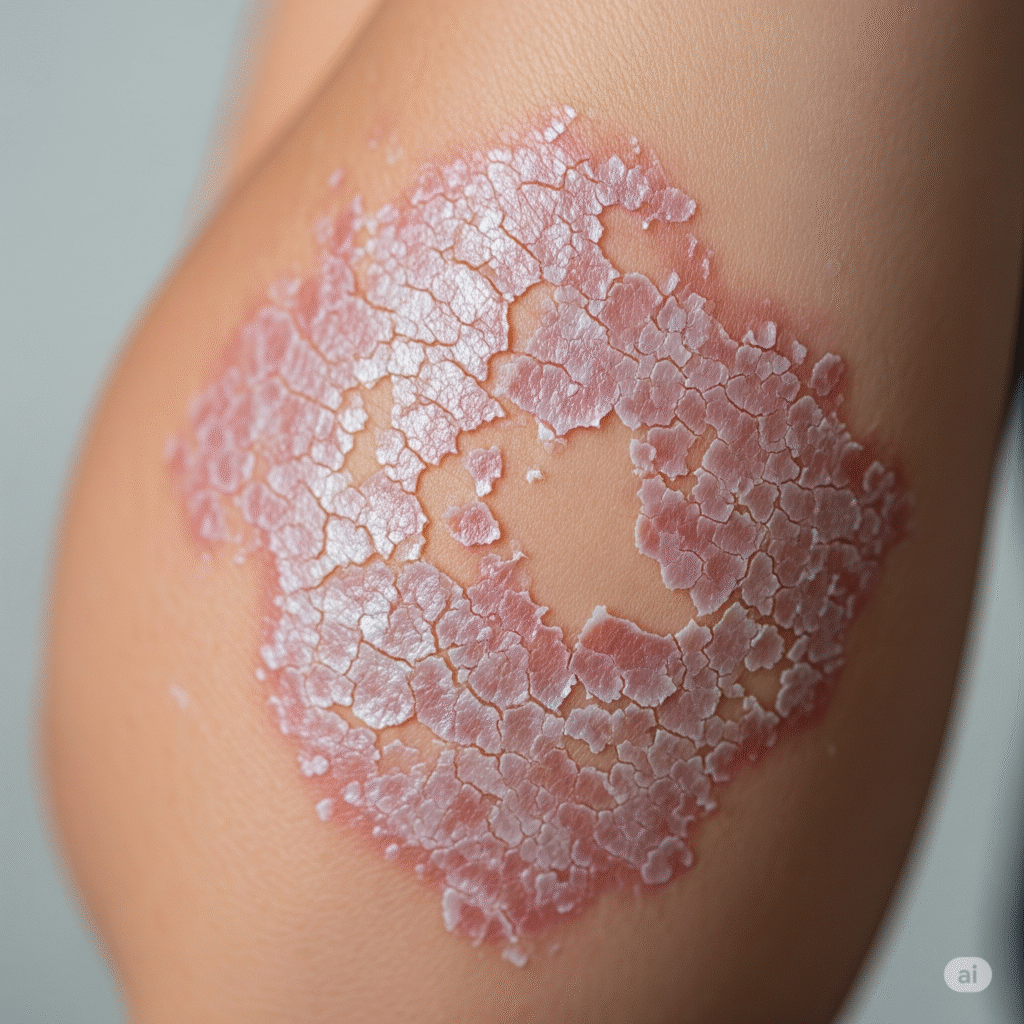psoriasis
Introduction
Psoriasis is a chronic autoimmune skin disorder that causes rapid buildup of skin cells, causing thick, crust, red patches on the skin. This buildup usually appears on the elbow, knees, scalp and lower back, but it can affect any part of the body. Psoriasis is not contagious, and it often moves in families. The trigger includes stress, infection, skin injury, some medications and weather changes. This condition undergoes cycles, which has a period of provocative and exemption. Although there is no cure, it can be managed with lifestyle changes, drugs and topical remedies.

Types of psoriasis
Rashes psoriasis
The most common type, raised, red patches with silver-white scales, usually on the elbow, knees, skull and back.
Guttate psoriasis
Short, drops such as red spots appear, often after infection such as strap throat, usually affects children and young adults.
Inverted psoriasis
The body occurs in folds such as the armpit, waist and under the breasts, shiny, red, shiny wounds without scales.
Pustular psoriasis
Characteristic of blisters filled with white pus surrounded by red skin; Can be localized or cover large areas.
Causes of psoriasis
- Family history plays a strong role in increasing the risk of psoriasis.
- A highly active immune system accidentally attacks healthy skin cells.
- Emotional or physical stress can trigger or deteriorate to instigate psoriasis.
- Infections such as strap throat can lead to psoriasis in some individuals.
- Skin injuries such as cut, irritation, or insect bite can cause provision.
- Cold, dry weather reduces skin moisture and can trigger symptoms.
- Smoking increases the risk and severity of plaque psoriasis.
- Excessive alcohol consumption can disrupt immune function and spoil psoriasis.
- Some drugs, including beta-blockers and lithium, can trigger flair-ups.
- Obesity produces skin folds and pressure that spoils psoriasis symptoms.
- Hormonal changes during puberty, pregnancy or menopause can affect psoriasis.
- Allergies, pollutants and chemical risk can spoil psoriasis in sensitive people.
Clinical features of psoriasis:
Raised Red Patch
Well-defined, red, skin inflamed area, often covered with silver-white scales.
Itching and Burning Sensation
Itching may occur in affected areas, can be burnt or felt, especially during the flare.
Dry, Cracked Skin
Skin may become dry and crack, sometimes leading to bleeding or pain.
Nail Changes
Nails or toenails can develop pits, streaks, malaise, or start separating from nail beds.
Thickened
In scalp psoriasis, thick scales can be formed with dandruff-like flaking and hair shedding.
Symptoms associated with psoriasis
- Red, crust patches appear with well -defined boundaries on the skin.
- The affected skin areas have frequent itching or irritation sensation.
- The skin becomes dry, torn, and bleeding during provoking.
- The nails show the bed thickening, beating, malaise or isolation.
- Pain or agony develops in patch, especially in friction areas.
- The skull develops thick, flaky scales that resemble severe Russian buildups.
- Joint hardness or inflammation is possible psoriatic arthritis development.
- Fatigue and low energy are common during active provisions.
Investigations in psoriasis
- Diagnosis is mainly based on the presence of skin, nails and skulls during physical examination.
Doctors evaluate personal and family history of psoriasis or autoimmune diseases.
A small skin sample is examined under a microscope to confirm psoriasis and control other conditions such as eczema or fungal infection.
Other autoimmune is used to control diseases or to examine signs of inflammation.
Imaging is performed if joint pain is present, if joint pain is present and confirm psoriatic arthritis.
Nail changes such as pittings, lines, or separation help support the diagnosis.
These tests help measure the level of inflammation in the body, especially useful in psoriatic arthritis.
Psoriatic helps to separate arthritis from rheumatism, as RF is usually negative in psoriatic cases.
In some cases, doctors may screen for HIV, as psoriasis can deteriorate in immunocomopromegred individuals.
